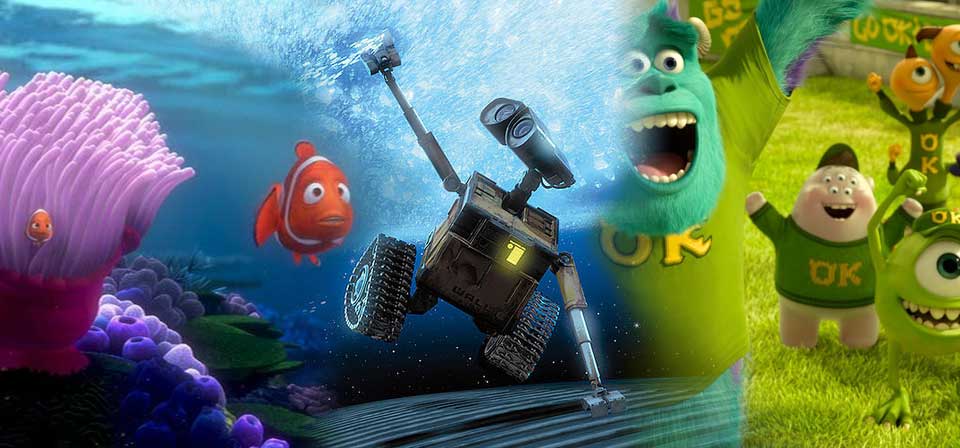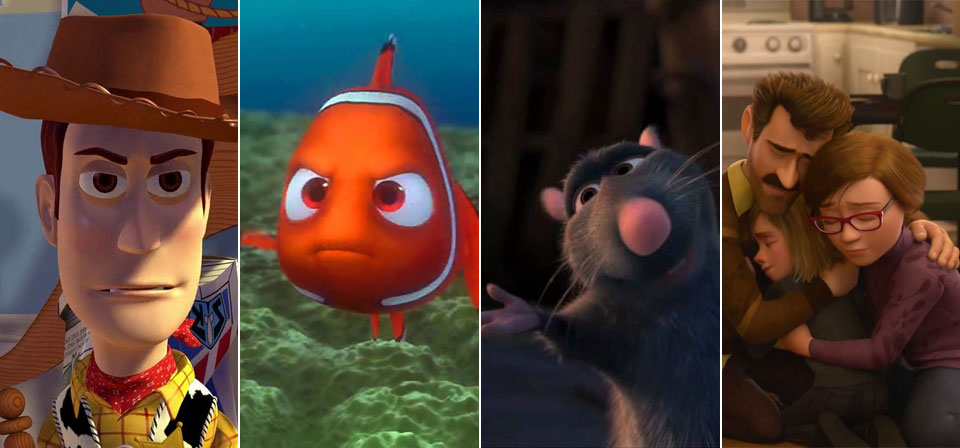In Praise of Pixar Short Films
The second collection of Pixar short films is available today in Blu-ray/DVD.
One of the more striking marks of Pixar’s innovative stature and impact on the world of Hollywood animation has been their pioneering revival of the long-neglected animated short film prior to the feature (at least prior to animated features) as an industry staple.

In 1998, moviegoers watching A Bug’s Life were treated to the outstanding short “Geri’s Game,” a brilliantly crafted tale of an old man playing chess against himself in the park. The following year, Toy Story 2 was preceded by a much earlier short, the groundbreaking “Luxo Jr,” a simple vignette about a pair of anthropomorphic desk lamps that gave Pixar its animated logo as well as its trademark rubber ball.
Since then, family audiences have come to expect a cartoon short before animated features, not only from Pixar but also from other studios. These theatrical shorts have also of course become bonus features in home releases, along with other shorts not released in theaters. In addition, Pixar has now collected its library of short releases into two volumes, the second of which is available today.
Following “Luxo Jr,” many of Pixar’s shorts (and those of competitors) have been dialogue-free skits, like modern-day silent films. Outstanding examples of this form include “For the Birds,” a simple parable about standing out in a crowd; “One-Man Band,” a play-off competition between two Italian street musicians; and “Lifted,” an unusual take on alien abduction.
“Boundin’,” the first Pixar short with verbal performance, is a bit disappointing by the high standards of previous shorts. A tale in rhyming verse about a dancing sheep and a wise jackalope, it’s formally creative but lacks the conceptual “leap” of the best shorts.
“Mike’s New Car,” Pixar’s first short spinoff of one of their feature films (Monsters, Inc.), is a cute exercise in slapstick and verbal comedy -- but it paved the way for “Jack-Jack Attack,” Brad Bird’s brilliant gloss on offscreen events in The Incredibles.
Though technically set after The Incredibles, “Jack-Jack Attack” consists mostly of flashbacks overlapping events in the original film. This “midquel” approach has inspired a number of subsequent Pixar shorts of varying quality, beginning with the forgettable “Mater and the Ghost Light” (the beginning of Pixar’s regrettable fascination with Larry the Cable Guy’s bumpkin tow truck from Cars).
All of the above shorts (along with a few others) are included in Pixar Short Films Collection 1 (buy Blu-ray/DVD combo). The newly released Collection 2 (buy Blu-ray/DVD combo) opens with a pair of gems: one of the studio’s most offbeat triumphs, “Your Friend the Rat,” a witty, talky and educational look at rats in history and culture starring Remy and Emile from Ratatouille (with a hilarious coda); and “Presto,” a breathless and brilliant master class in wordless Looney Tunes slapstick featuring a stage magician, his disgruntled rabbit and a pair of magic hats. (Does the magician, with his pencil mustache and “Sorcerer’s Apprentice” cap, represent Walt Disney? If so, is the upstart rabbit Pixar?
Other Collection 2 highlights include a trio of what might be called cosmological fantasies: “Partly Cloudy,” a thematically intriguing update on the Stork Theory of where babies come from (with nascent pro-life resonances); the formally inspired “Day & Night,” a fascinating blend 3D and 2D animation with overlapping frames of reference (some mildly risqué humor here); and “La Luna,” a weightless bit of Sendak-like whimsy about an unusual family business.
Among a trio of midquel spinoffs, the Wall-E-inspired “Burn-E” is probably the best. There are also a pair of Up midquels, “Dug’s Special Mission” (amusing) and “George and A.J.” (rendered in 2D limited animation, suggesting a half-baked effort abandoned before completion).
A pair of disposable Toy Story shorts, “Hawaiian Vacation” and “Small Fry,” leave open the question whether the Toy Story magic can possibly be captured in short form. (This question was finally answered in the affirmative in a hilarious third Toy Story short, “Partysaurus Rex,” not yet released on home video but presumably destined for a future Collection 3.)
Rounding out (or, more bluntly, padding) Collection 2 are a couple of wholly unnecessary episodes of the formulaic Cars spinoff series “Cars Toons: Mater’s Tall Tales,” “Air Mater” and “Time Travel Mater.” (Are you noticing a pattern here?)
Little cameo overlaps between Pixar’s shorts and features are among the pleasures of Pixar’s world. The elderly chess player from “Geri’s Game” is reused as the toy cleaner in Toy Story 2. The “For the Birds” birds are fleetingly glimpsed in Cars (where they are the only organic life forms in an otherwise automotive world). Linguini from Ratatouille is reused as the potential alien abductee in “Lifted.”
Although these shorts aren’t all equal in quality, the short form is in some ways even more exciting to me than feature animation, and Pixar’s revival of the form is as heartening to me as their unprecedented, almost unbroken track record of good-to-excellent animated features.
Nowadays, even when I have to snooze through the likes of a fourth Ice Age movie, I can hope to enjoy a well-made short like “The Longest Daycare” (a dialogue-free short starring Maggie Simpson!). And while I was less thrilled with Disney’s Wreck-it Ralph than I was hoping, the short “Paperman” that played before it is an unqualified delight. Kudos to Pixar for blazing a trail here as elsewhere.
Related

Three ages of Pixar
For 15 astonishing years, from 1995 to 2009, Pixar created a body of work — 10 films — so revolutionary and beyond mainstream Hollywood animation that it’s hard to quantify … In recent years, alas, Pixar has stumbled more often than not.

What’s so special about Pixar’s flawed protagonists and their moral journeys
Only Pixar regularly impresses on viewers that just because you’re the hero of your story doesn’t mean you’re right about everything: that you may make serious mistakes, there may be consequences, and you must take responsibility.
Three Phases of Pixar History
Peter Chattaway has just posted some thoughts he’s previously shared elsewhere regarding the shape of Pixar’s body of work to date, and I’ve long thought it’s a brilliant theory.
Recent
- Benoit Blanc goes to church: Mysteries and faith in Wake Up Dead Man
- Are there too many Jesus movies?
- Antidote to the digital revolution: Carlo Acutis: Roadmap to Reality
- “Not I, But God”: Interview with Carlo Acutis: Roadmap to Reality director Tim Moriarty
- Gunn’s Superman is silly and sincere, and that’s good. It could be smarter.
Home Video
Copyright © 2000– Steven D. Greydanus. All rights reserved.